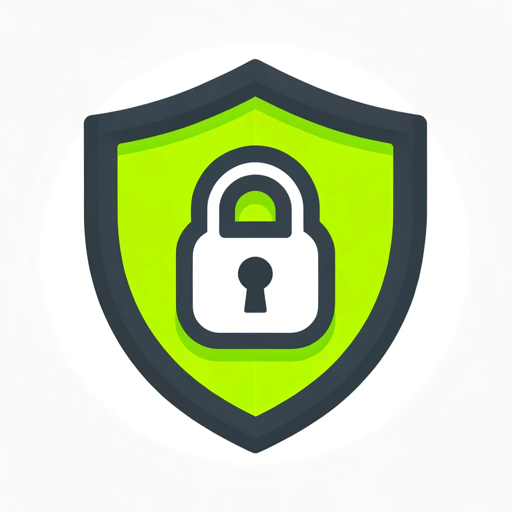EU AI Act Compliance Checker-AI compliance review tool
AI-powered compliance made simple
⚡ Start
Can you detail the obligations for AI system providers under the AI Act?
What are the risk categories in the AI Act?
How should AI systems be monitored for compliance according to the AI Act?
Related Tools
Load More
GDPR Compliance
Your GDPR guide

GDPR Ready with Generative AI.
Guidelines for GDPR Compliance and Information Privacy Manager.
Datenschutz Assistent
Beratung zu Datenschutzbestimmungen mit Fokus auf DSGVO, BDSG, LDSG, TTDSG, ePrivacy, NIS2

EU Law GPT
Expert in EU legal analysis, detail-oriented responses

European Union Law
Expert on EU regulations and directives, offering detailed, formal guidance.

RGPD Assistant
Assistant de conformité RGPD. Vérifiez toujours auprès d'un organisme compétent.
20.0 / 5 (200 votes)
Introduction to the EU AI Act Compliance Checker
The EU AI Act Compliance Checker is designed to assist organizations in ensuring that their AI systems comply with the regulations proposed under the European Union’s AI Act. This tool aims to evaluate and guide the AI systems based on their risk classification, intended use, and potential societal impacts as defined by the Act. It is structured to provide tailored compliance advice to various entities such as AI developers, deployers, and distributors, and it ensures that these stakeholders meet the requirements specified by the EU AI Act. For instance, if a company develops AI for biometric identification, the Compliance Checker can assess the system’s risk level, ensuring adherence to transparency, accountability, and governance standards required for high-risk AI under the Act.

Core Functions of the EU AI Act Compliance Checker
Risk Classification of AI Systems
Example
An AI provider submits details about an AI system used for facial recognition in public spaces. The Compliance Checker identifies it as a high-risk system, subject to stricter regulations.
Scenario
In real-world scenarios, an AI company developing facial recognition software for law enforcement would use the tool to understand which category their system falls under and what specific compliance steps are necessary, such as data governance, accuracy testing, and transparency reports.
Compliance Documentation Generator
Example
A medical AI startup needs to prepare detailed compliance documents before marketing its product in the EU. The Compliance Checker helps generate these documents in line with the Act’s standards.
Scenario
A health-tech company developing AI-driven diagnostic tools for hospitals must submit technical documentation. The tool will compile these materials, ensuring they meet the transparency, accuracy, and accountability measures defined in the Act.
Risk Mitigation Advisory
Example
A company deploying AI for job applicant screening uses the tool to receive recommendations on mitigating bias and ensuring non-discriminatory practices.
Scenario
A recruitment platform deploying AI to assess job applicants would benefit from the Compliance Checker, which could highlight potential biases in its algorithm and recommend adjustments to ensure fair, compliant, and transparent processes.
Target User Groups for the EU AI Act Compliance Checker
AI Providers and Developers
AI providers who develop or adapt systems for the European market need to ensure compliance before deployment. These users benefit from the checker’s risk classification tools, documentation guidance, and continuous monitoring features, ensuring that their systems adhere to high-risk and non-high-risk obligations defined by the EU AI Act.
AI Deployers and Public Authorities
Organizations deploying AI systems, such as public authorities and private enterprises, are a key user group. They are responsible for ensuring that the AI systems under their control operate within the legal framework, and the Compliance Checker helps them track and verify ongoing adherence to EU regulations, particularly in areas like biometrics, law enforcement, and public safety applications.

How to Use EU AI Act Compliance Checker
Visit aichatonline.org
Access a free trial without login. No ChatGPT Plus subscription is needed to use the tool.
Select the AI System Category
Specify whether you're assessing a foundation model, high-risk AI, or other system categories. This helps tailor the compliance requirements to your specific system.
Define Your Role
Indicate whether you are a Provider, Deployer, Distributor, or other entity under the AI Act. Your obligations differ based on your role.
Input System Information
Provide the technical documentation and key details about your AI system, such as datasets used, risk levels, and intended use cases.
Generate a Compliance Report
The tool will analyze your inputs, flag compliance gaps, and provide tailored recommendations. You can download or save the compliance report for internal use.
Try other advanced and practical GPTs
Cyber Threat Hunting and Detection Engineering
AI-Powered Cybersecurity Detection & Hunting

Job Hunting Assistant
AI-Powered Job Application Assistance

EPB, OPB, Dec, Award Writer - Speech Pro AF
AI-Powered Documentation for Air Force

Context-Aware Grammar Translator
AI-powered context-aware grammar correction

Mental Health Therapist
AI-powered tool for detailed therapy notes

Ethnicity Guesser
AI-powered ethnicity guessing tool for diverse backgrounds.

Angel Investor
AI-Powered Startup and Investment Insights

Curriculum Vitae Builder
AI-powered CV Optimization for Professionals

Ontario Report Card Comments & Curriculum Planning
AI-powered Ontario curriculum-based comments

Curriculum Vitae Builder
AI-Powered Resume Crafting Tool

Curriculum Crafter
AI-Powered Curriculum Design Made Easy

Hindu Myth Explorer
AI-driven exploration of Hindu mythology

- Risk Assessment
- Document Management
- Regulatory Review
- System Evaluation
- Compliance Tracking
Q&A on EU AI Act Compliance Checker
What types of AI systems can the EU AI Act Compliance Checker assess?
The tool can assess a wide range of AI systems, including foundation models, high-risk AI systems like biometric identification tools, and general AI used in non-critical applications. It adapts to the regulatory requirements based on the AI system category.
Do I need technical expertise to use the Compliance Checker?
No, the tool is designed for both technical and non-technical users. It simplifies complex regulatory requirements, guiding users through compliance without requiring deep legal or technical knowledge.
How does the tool handle the classification of 'high-risk' AI systems?
The tool automatically checks if your AI system falls under the 'high-risk' category by analyzing its functions and use cases. If classified as high-risk, additional compliance checks related to safety, transparency, and risk management are triggered.
What documentation do I need to provide?
You will need technical documentation of your AI system, such as descriptions of datasets, algorithms, risk mitigation strategies, and development processes. The more detailed the documentation, the more precise the compliance assessment.
Can the tool assist with ongoing monitoring and updates after initial compliance?
Yes, the tool helps maintain compliance by providing updates as regulations evolve. It also offers guidelines for continuous monitoring of AI system performance and adherence to legal standards.